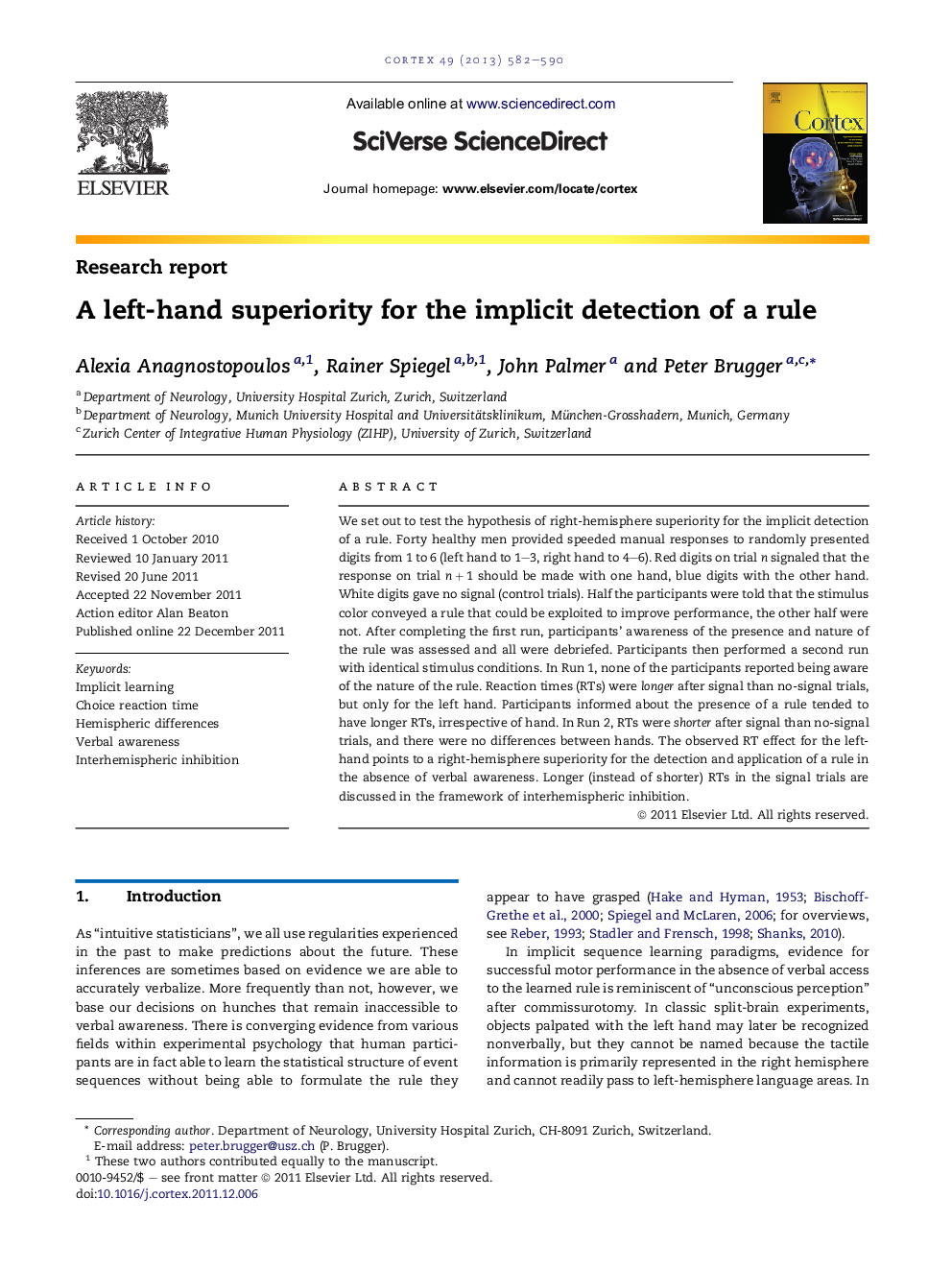| Article ID | Journal | Published Year | Pages | File Type |
|---|---|---|---|---|
| 942075 | Cortex | 2013 | 9 Pages |
We set out to test the hypothesis of right-hemisphere superiority for the implicit detection of a rule. Forty healthy men provided speeded manual responses to randomly presented digits from 1 to 6 (left hand to 1–3, right hand to 4–6). Red digits on trial n signaled that the response on trial n + 1 should be made with one hand, blue digits with the other hand. White digits gave no signal (control trials). Half the participants were told that the stimulus color conveyed a rule that could be exploited to improve performance, the other half were not. After completing the first run, participants' awareness of the presence and nature of the rule was assessed and all were debriefed. Participants then performed a second run with identical stimulus conditions. In Run 1, none of the participants reported being aware of the nature of the rule. Reaction times (RTs) were longer after signal than no-signal trials, but only for the left hand. Participants informed about the presence of a rule tended to have longer RTs, irrespective of hand. In Run 2, RTs were shorter after signal than no-signal trials, and there were no differences between hands. The observed RT effect for the left-hand points to a right-hemisphere superiority for the detection and application of a rule in the absence of verbal awareness. Longer (instead of shorter) RTs in the signal trials are discussed in the framework of interhemispheric inhibition.
